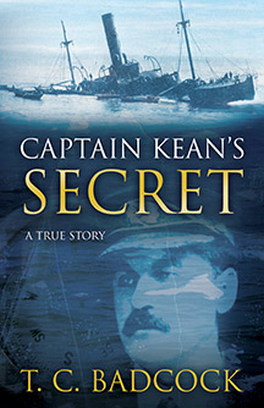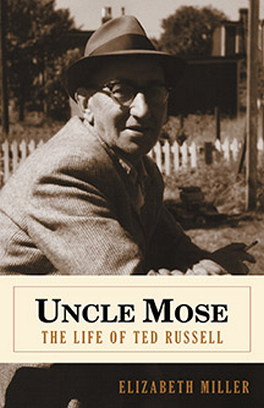Stories of Trains, Boats, and Airplanes in Newfoundland From the “Newfie Bullet” to the SS Kyle to Amelia Earhart, Getting Around the Rock is a fascinating history of the transportation sector, largely in pre-Confederation Newfoundland and Labrador. These recollections were passed on to the author by his father, Raymond Lahey, and his uncle, Bill Lahey, who spent their working lives as telegraph operators in the changing times of transportation in the province. Stories include: How “The Bullet” Came to Newfoundland Family Connections: The Reid Newfoundland Company Wireless Telegraphy The Newfoundland Coastal Steamers Aviation History and the Newfoundland Connection The Botwood Seaplane Base Newfoundland Airport (Gander)
The idea of constructing a railroad first appeared in a local newspaper, the Morning Post, in 1847. It was recommended that a railway line should be constructed from St. John’s to Portugal Cove and also link up to a steamer service for Conception Bay, connecting the major centres of Harbour Grace and Carbonear with St. John’s. This concept never materialized. The first route actually chosen for a railroad in Newfoundland was from St. John’s to Come By Chance, then veering westward, skirting the bottom of Red Indian Lake and terminating in St. George’s Bay, a distance of 380 miles (611 kilometres). This short, precise route would also incorporate a steamer service between the terminal in St. George’s Bay with Moncton or Campbellton in New Brunswick.
Canadian engineer Sir Sanford Fleming, the builder of the Canadian Pacific Railway, approached the Newfoundland Government in 1868 and sponsored a preliminary railway survey across the southern interior from St. John’s to St. George’s. This report was in fact a combination exploration survey that was completed by Alexander Murray in 1875 and submitted to the government in 1876. But after completion of this survey (Fleming Survey), the Government of Newfoundland was instructed not to proceed with construction. The Government of France asserted that it would impede their fishing rights acquired on the west coast of Newfoundland under the 1713 Treaty of Utrecht. The British Government, which represented Newfoundland in foreign affairs, then formally asked Newfoundland not to construct any railway that would have its rail terminus on any part of the French Shore. (The French had fishing rights on the whole western side of the island of Newfoundland, from Cape Ray to Cape Bauld).
Consequently, the Newfoundland Government was forced to abandon the cheapest route because it might be found illegal, and the British Government did not want to make any political waves with the Government of France. It was not until William Whiteway became premier in 1878 that a decision was taken to proceed. The alternate route chosen avoided the French Shore and was to go from Fort William in St. John’s to terminate in Halls Bay, Notre Dame Bay, on the northeast coast, far from the western shore. The railway line was to run for a distance of 340 miles (547 kilometres). Included also in this contract was a branch line from the main line to Harbour Grace, Conception Bay.
The narrow-gauge railway that brought the island and its people into the twentieth century began formally on August 9, with the first spike driven August 16, 1881. The first contract was awarded to Albert L. Blackman’s Consortium, an American syndicate. On December 12, 1881, the first locomotive appeared on the tracks, with an excursion from St. John’s to Kelligrews on June 29, 1882. By September 16, 1882, the railway had reached Holyrood, where it connected with the Lady Glover for further passage to Harbour Grace or Carbonear. Robert Bond was president of the railway in August 1883, when Prince George (later King George V), who was midshipman on the HMS Canada, arrived in St. John’s. While on an excursion from the city, he drove a symbolic spike at the end of the existing railway line about fifty miles from St. John’s. This would have been somewhere between Ocean Pond and Whitbourne.
December of 1883 saw the narrow-gauge line reach Harbour Grace Junction, now the community of Whitbourne. Sir John Glover, the governor of the Dominion of Newfoundland, drove the last spike, about one mile from Tilton, Conception Bay, on October 11, 1884, completing the railway line to Harbour Grace. This line was constructed and branched from the main line at Harbour Grace Junction, near Whitbourne, 54.6 miles (87.9 kilometres) from St. John’s. Construction of this branch had proceeded from Harbour Grace as well as from Whitbourne. From Whitbourne the line went to Osborne’s Siding (Mile 2.55), then to Blaketown (Mile 4.28) on the south side of Dildo Pond (Holiday Hill), on to Broad Cove Station (Mile 7.25, later named Dildo Siding on Newfoundland Railway timetables), then across the barrens to Tilton, Conception Bay. These eighty-four miles of railway line that wound around the settlements between St. John’s and Harbour Grace were called the Harbour Grace Railway. By 1884, rail service from St. John’s to Whitbourne and Harbour Grace was three times a week. The initial rail line from St. John’s to Whitbourne included stops at St. Ann’s, Topsail, Squires, Kelligrews, Holyrood, Salmon Cove, Davenport, Brigus Junction, Hodge Water, and Harbour Grace Junction. Davenport Station near Avondale was named after American entrepreneur Daniel Davenport, who was involved in early railway construction.
By 1883, Blackman’s syndicate had gone into receivership. The bondholders for this group in England continued to construct and operate this portion of the railway (the Harbour Grace Railway) until 1896, when it was taken over by the Newfoundland Government.
Robert Gillespie Reid and George H. Middleton arrived in Newfoundland to complete the trans-island railway, signing a contract on June 16, 1890, to construct the line from Placentia Junction to Halls Bay. Thus began Reid’s involvement with the Newfoundland Railway. Eventually, after the French Shore question was resolved, this main line was extended to St. George’s. In 1893, the Halls Bay contract was again revised, further extending the railroad on to Port aux Basques. This agreement was between Reid and the government. Middleton had left the scene. This was the final route selected between St. John’s and Port aux Basques, 547 miles (880 kilometres) long, considerably lengthier than the first route surveyed, the eventual route having also to traverse the Long Range Mountains.
Sir Robert Reid built and maintained the railroad until he died in 1908. Reid was an industrialist who promoted Newfoundland and should be credited with the developing of mining, pulp and paper, and the logging industries in Newfoundland. The city of St. John’s may also owe him a debt of thanks for the introduction of electric streetcars on May 1, 1900, cobblestone pavement, and Prince’s Rink (Prince of Wales Rink) in 1899.
The first train that completely crossed the island was a work train that completed the final repairs to bridges and trestles and the laying of the last section of track. This train departed Whitbourne on April 23 and arrived in Port aux Basques in early June 1898. An excerpt from the Daily News, dated April 22, 1928, and written by T. G. Ford, lists the following names of people on that train: James McDonald, engineer (from PEI); Bart Dunphy, fireman; Alex Frazer, brakeman; and John Day, conductor. The crew was under the charge of Alexander Cobb and Daniel Ferguson. Others were: Thomas G. Ford, the operator and timekeeper (from Harbour Grace); George Wallace Gammon, piledriver engineer (living in Whitbourne); John Brinkstone, blacksmith; John Healy, labour foreman (from Holyrood); George Mills, woods foreman; Baxter Webber, cook; and Ambrose Nicholas, cleaner (from Harbour Grace). There were also twenty-five construction labourers.
Thomas Ford was reported to have driven the last spike. John Day was presumably the same conductor who was killed on July 8, 1898. The Evening Herald reported that on July 1, 1898, the first passenger train left Empire Avenue in St. John’s at 7:00 p.m. and arrived in Port aux Basques 10:45 p.m. the following night. The fifty passengers were transported from the train aboard the SS Bruce and arrived in North Sydney the following morning at 7:00 a.m. The steamer Bruce continued on the North Sydney run until March 24, 1911, when the vessel was lost near Main-à-Dieu, Nova Scotia.
The St. John’s–Port aux Basques–North Sydney railway-ferry connection was a huge turning point in Newfoundland’s history for two reasons, one immediate and one that would affect its future. The railway for the first time truly connected the populations of eastern and western Newfoundland, who had different settlement patterns, diverse cultural roots, and little in common except geography. With its related Gulf ferry service, it also established a regular connection between Newfoundland’s capital and its most populous areas and the Canadian mainland, facilitating transportation and communications between Newfoundland and Canada, and becoming one of the factors that paved the way for Confederation in 1949.

-249173.jpg)





















